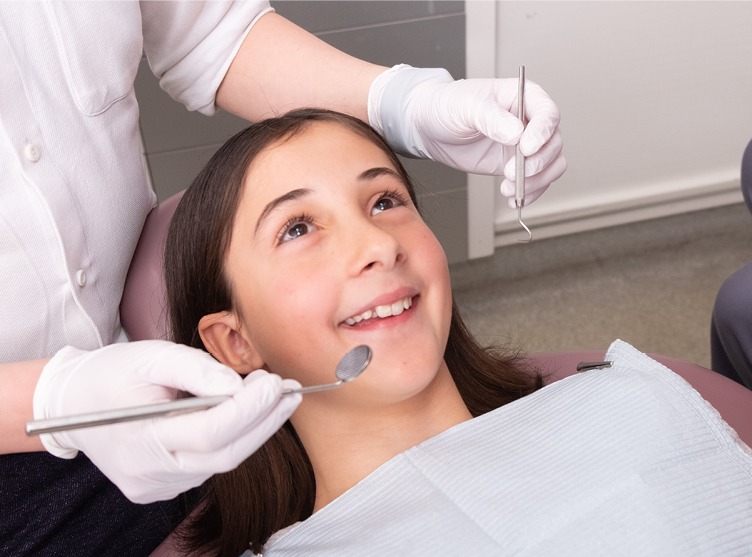Legacy Orthodontics - An Overview
Legacy Orthodontics - An Overview
Blog Article
What Does Legacy Orthodontics Do?
Table of ContentsLegacy Orthodontics - An OverviewWhat Does Legacy Orthodontics Do?10 Simple Techniques For Legacy OrthodonticsOur Legacy Orthodontics PDFsThe Facts About Legacy Orthodontics Revealed
In addition, we provide flexible therapy routines, flexible repayment alternatives and a fun, satisfying experience.An orthodontist is a dental professional trained to diagnose, stop, and deal with teeth and jaw irregularities. Orthodontists work with people of all ages, from children to adults.
Malocclusion, or misaligned teeth, can lead to dental issues, including dental caries, gum disease, and tough or agonizing eating. Not everyone is born with straight teeth. If you have a negative bite or big areas in between your teeth, you may wish to speak with a dental expert specializing in orthodontic care.
The smart Trick of Legacy Orthodontics That Nobody is Talking About
( Image Credit History: DigitalVision/Getty Images) Orthodontists use dealt with and detachable dental gadgets, like dental braces, retainers, and bands, to alter the position of teeth in your mouth. Orthodontic treatment is for dental problems, consisting of: Jagged teethBite troubles, like an overbite or an underbiteCrowded teeth or teeth that are also far apartJaw misalignmentThe goal of orthodontic treatment is to enhance your bite.
A healthy and balanced bite guarantees you can consume, chew, and talk properly. While you may believe of orthodontists as generally for children or young adults that require braces, they can correct dental problems at any kind of age. Orthodontists go to university, oral college, and orthodontic institution. After college graduation, they spend 2 or 3 years in an orthodontic residency program.
All orthodontists are dentists, yet not all dental practitioners are orthodontists. Orthodontic residency programs provide extensive, focused instruction for oral experts. They concentrate on 2 areas: How to correctly and safely move teeth Just how to properly lead advancement in the teeth, jaw, and faceOnce an orthodontist has completed training, they have the choice to come to be board licensed.
Legacy Orthodontics for Dummies
Malocclusion leads to tooth overcrowding, an irregular jaw, or irregular bite patterns. Malocclusion is typically treated with: Your orthodontist attaches metal, ceramic, or plastic square bonds to your teeth.
If you have only small malocclusion, you might be able to use clear dental braces, called aligners, instead of typical dental braces (https://www.wattpad.com/user/legacyortho1). Some people require a headwear to help relocate teeth into line with stress from outside the mouth. After dental braces or aligners, you'll need to put on a retainer. A retainer is a custom-made gadget that keeps your teeth in position.
They can produce added area in the mouth without having to pull teeth. Orthodontists make use of wires, medical screws, or plates to support your jaw bone.
You may require to see an orthodontist if you have: Crowding or not sufficient room for every one of your teethOverbite, when your top teeth come by your bottom teethUnderbite, when your base teeth are also much forwardSpacing or concerns with gapsCrossbite, which is when your upper teeth fit behind your bottom teeth when your mouth is closedOpen bite or a vertical void in between your front bottom and top teethMisplaced midline, when the center of your base and upper teeth do not align Correcting a dental malocclusion can: Make attacking, chewing, and speaking easierImprove the symmetry of our face and your overall appearanceEase pain from temporomandibular joint problemsDifferent your teeth and make them simpler to cleanse, aiding protect against tooth decay or cavities It's usually a dentist who first notifications misaligned teeth during a regular test.
10 Simple Techniques For Legacy Orthodontics

Throughout your very first orthodontic appointment, you'll likely have: A dental examPhotos taken of your face and smileDental X-raysPanoramic (360 level) X-rays of your face and headImpressions to produce mold and mildews of your teethThese examinations will assist your orthodontist understand just how to wage your therapy. leesburg invisalign. An orthodontist is a dental expert who's had training to treat your teeth and jaw
An orthodontist is focused on your bite, so something like a chipped tooth would certainly be managed by a dental expert. Orthodontists are focused on your bite, or the means your teeth fit together, and the straightness of your teeth.
Ever asked yourself exactly how celebrities constantly appear to have perfectly aligned teeth? Orthodontists are dental specialists who concentrate on correcting abnormalities in the teeth and jaws.
How Legacy Orthodontics can Save You Time, Stress, and Money.

While dental braces are one of the most commonly identified orthodontic therapy, orthodontists have a diverse toolkit at their disposal. The specific strategy picked depends on the seriousness of the instance, the client's age, and specific choices. These tried-and-true dental braces use a system of brackets bonded to the teeth and attached by wires.
Clear aligners, like Invisalign, are a popular option for patients looking for a much more discreet treatment alternative. These removable trays are customized to gradually change the teeth's position. home Headgear may be utilized together with dental braces or aligners to use additional targeted pressures, particularly for correcting jaw inconsistencies. In cases of slim jaws, palatal expanders can be used to produce room for proper tooth placement.
Report this page